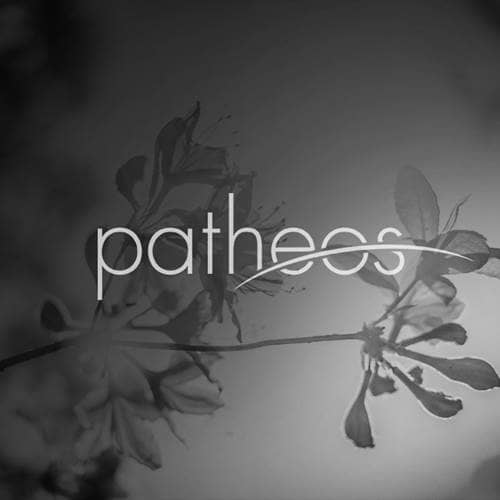As Buber also pointed out, Hebrew is much richer in corporeal language than the languages of its greatest translations: the preposition translated as "before" is, in Hebrew, "to the face" [lifney], while the word yad (hand) appears in a host of prepositions and expressions and the literal meaning of the biblical term for "patience" is, somewhat more oddly, "length of nostrils" [erekh apayim]; a trace of this use of the body as touchstone for all relations in space survives in the KJV rendering of "surface" as "face" in Genesis 1:2: "And darkness was upon the face of the deep." What Buber argues is that the profound Hebraic connection between the material and spiritual universe, in which the single word ru'akh means wind AND breath AND spirit, has been lost in the spiritualizing afterlife of the Bible.
Crumb's illustrations do not merely restore the physical dimension suppressed by theologizing abstraction, at their best they convey that there are no differences between these realms, as there is none between -- in one of the more charged corollaries of the distinction between Earth and spirit -- sex and love. My favorite illustration in the book is for the last verses of Genesis 24, in which Isaac "brought [Rebecca] into the tent of Sarah, his mother, and took Rekah as wife, and he loved her, and Isaac found solace after the death of his mother." The panel shows the lovers lying spent among the voluptuous, almost vaginal folds of Sarah's tent, Isaac's fingers half-buried in Rebecca's wavy hair, a leg wrapped around her ample hips, both of them with eyes half-closed.
If this picture forthrightly restores something integral about the earthy-sublime worldview of Genesis, it also gives us another angle on its creator, spiritualizing the Crumb most known for his raunchiness. The book is dedicated, without further comment, "to Alene," Crumb's Jewish wife -- and a comix genius in her own right. Alene is everywhere in the Crumb's rendition of female characters of Genesis, as if in taking on the task of illustrating Genesis he had also committed himself to discovering the primeval but nevertheless recognizable ancestors not only of his Jewish wife but also of all those other strong-featured, wavy-haired, prominently-nippled Amazons that have populated Crumb's comics for decades.
"The Footwear, Show Me the Footwear!"
During the Q & A at the JCC event, waiting her turn in the line going up one aisle, was Crumb's wet dream in the flesh, the two pigtails, breasts like projectiles, shoulders like a linebacker, short skirt over full thighs. She was speaking, but Reb Crumb clearly wasn't hearing a word: "The footwear, show me the footwear!" On the laptop before her, Mouly found and clicked on the appropriate image, as she'd been deftly doing all evening -- and on the screen behind them appeared a self-portrait of the young Crumb, sniffing the inside of a woman's boot. The woman clomped onto the stage and leaned over the distinguished guest speaker, who was theatrically wiping his brow. On her feet, shiny Mary Janes with two-inch platforms, over the surreally muscular calves that signal, in Crumb's universe, the apotheosis of female desirability. Crumb may have been putting on an act, but the rest of us were in genuine ecstasy.
In case you're wondering, I'm a feminist. But as lewd and even grotesque as Crumb's depictions of women undeniably are, I've never felt offended by them. They're so clearly an honest and precise reflection of a fascinatingly perverse sexual fantasy, in which a hairy little near-sighted comic-book geek obsessively worships the powerful woman who had come to life in the Q & A line at the JCC. In the comix, the artist was no superhero fantasy of masculine power but rather the very embodiment of male sexual vulnerability. That there were men out there that were turned on not by the airbrushed blonde cheerleaders of Playboy but rather by, well, big women, with strangely prominent teeth and lips and frizzy hair, was a pleasant surprise, one that I took almost as a personal compliment (while recognizing that no one, not even Alene, actually looked like that).
I love Philip Roth, and appreciate his particular combination of literary talent and erotic weirdness. But Portnoy's Complaint, in case someone still hasn't noticed, is no paean to the sexual allure of Jewish women (unless they're holding an Israeli Army-issue gun). The Jewish man who chases shikses is, by this point, a tired cliché. In Crumb, we had something new: an anti-Portnoy, a goy (but really, wasn't he an honorary Jew, with the Woody Allen neuroses and his Harvey Pekar connections, and his wife, his wife!) who loved us! Of course it's not entirely new -- the dark and erotic "Jewess" features in the European literary imagination (philo- and anti-Semitism often inhabit neighboring regions), and I suppose she is, technically, a third cousin to Crumb's juicier women. But sitting in the audience of the JCC and watching her up there with Crumb, I enjoyed how they were sharing the stage.




